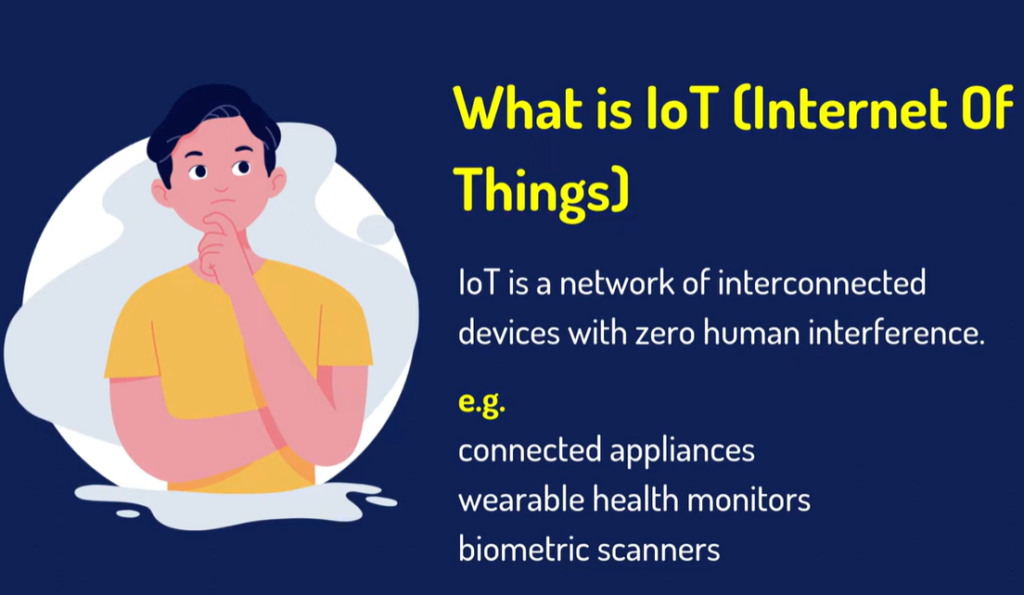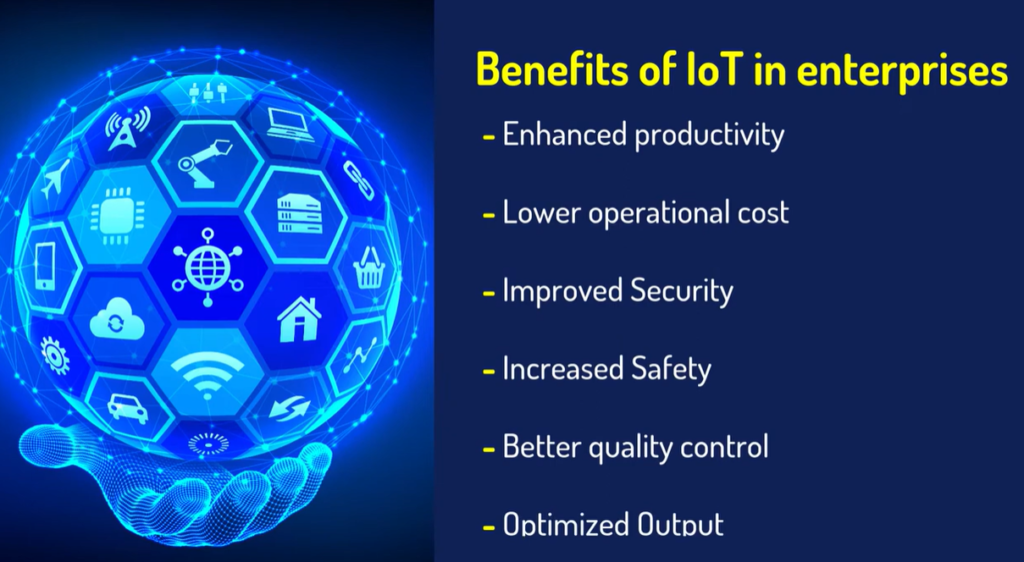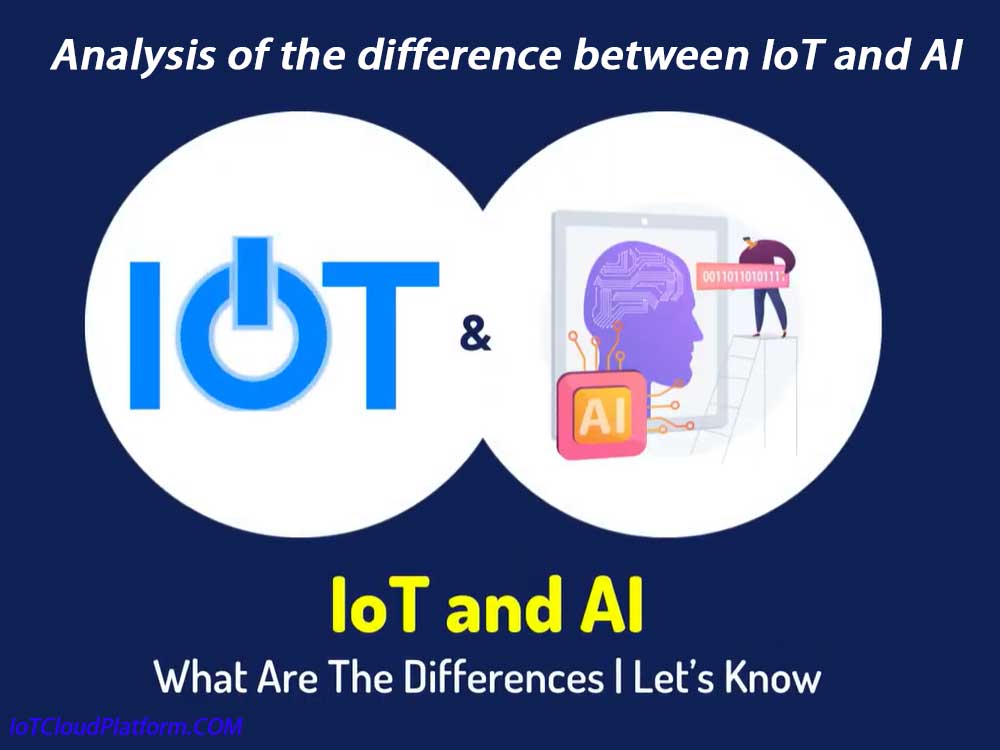
Analysis of the difference between IoT and AI
The Internet of Things (IoT) and Artificial Intelligence (AI) are two different but interrelated technologies, which have significant differences in definition, core functions, characteristics and application areas.
The following is a detailed analysis of the difference between IoT and AI:
Definition and core concepts
Internet of Things (IoT)
The Internet of Things refers to a network that connects any object to the Internet for information exchange and communication through information sensing devices such as radio frequency identification (RFID), infrared sensors, global positioning systems, laser scanners, etc., according to agreed protocols, to achieve intelligent identification, positioning, tracking, monitoring and management.
Its core lies in achieving the connection of things, that is, the deep integration of the physical world and the digital world.
The IoT system is usually composed of the device layer, network layer and application layer, and realizes intelligent monitoring and management of equipment and environment through data collection, transmission and analysis.
Artificial Intelligence (AI)
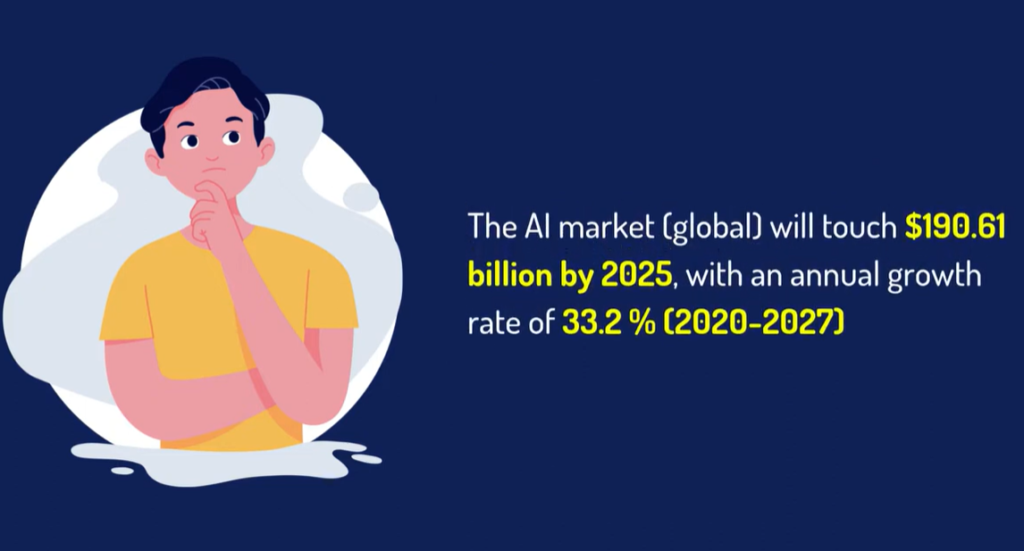
Artificial Intelligence refers to the development of technologies and algorithms that simulate human intelligence through the cross-disciplinary integration of computer science, mathematics, statistics and other disciplines.
Its core is to simulate human thinking, learning, reasoning and decision-making capabilities, so that machines can complete complex tasks autonomously.
Artificial intelligence covers multiple fields such as machine learning, deep learning, natural language processing, computer vision, etc., and is widely used in autonomous driving, robots, voice recognition, image recognition, intelligent customer service, smart home, medical diagnosis and other fields.
Core functions and features
Internet of Things (IoT):
- Connectivity: The core of the Internet of Things is to connect various devices, sensors, etc. through the Internet to achieve information sharing. This connectivity allows devices to communicate with each other and work together.
- Perception: The Internet of Things perceives information about the physical world, such as temperature, humidity, location, etc., through various sensors. These perception data are the basis for the intelligent processing and application of the Internet of Things.
- Intelligence: The Internet of Things combines data processing and analysis technology to realize the intelligent processing and application of perception information. Through intelligent algorithms, the Internet of Things system can automatically adjust and optimize the operating status of equipment and improve the overall efficiency of the system.
Artificial Intelligence (AI):
- Intelligence: The core of artificial intelligence is to simulate and realize human intelligent behavior, including learning, reasoning, perception and decision-making. This intelligence enables machines to handle complex tasks autonomously and adapt to environmental changes to a certain extent.
- Autonomy: Artificial intelligence systems can autonomously process information, make decisions, and achieve self-optimization and upgrade to a certain extent. This autonomy enables artificial intelligence systems to continue to operate and improve without human intervention.
- Interdisciplinary: Artificial intelligence involves multiple disciplines, including computer science, mathematics, statistics, psychology, etc. This intersection requires the integration and innovation of multidisciplinary knowledge in the development of artificial intelligence technology.
Application Fields
Internet of Things (IoT)
The Internet of Things is widely used in smart homes, smart cities, smart transportation, smart medical care and other fields.
In smart homes, IoT technology can realize the automatic control and intelligent management of home devices.
In smart cities, IoT technology can optimize urban resource allocation and improve urban management efficiency.
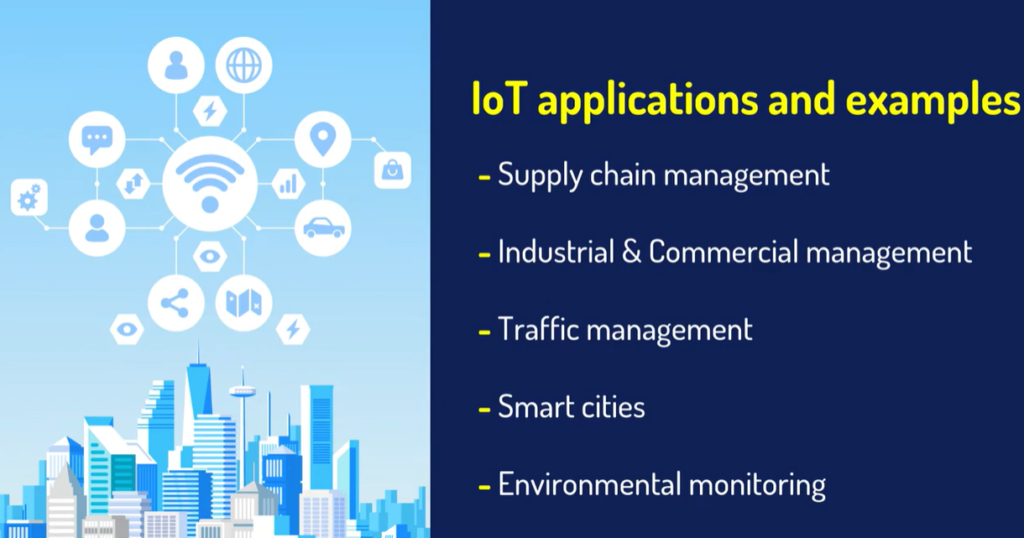
In smart transportation, IoT technology can realize real-time sharing and intelligent scheduling of traffic information.
In smart healthcare, IoT technology can realize functions such as telemedicine and health management.
Artificial Intelligence (AI)
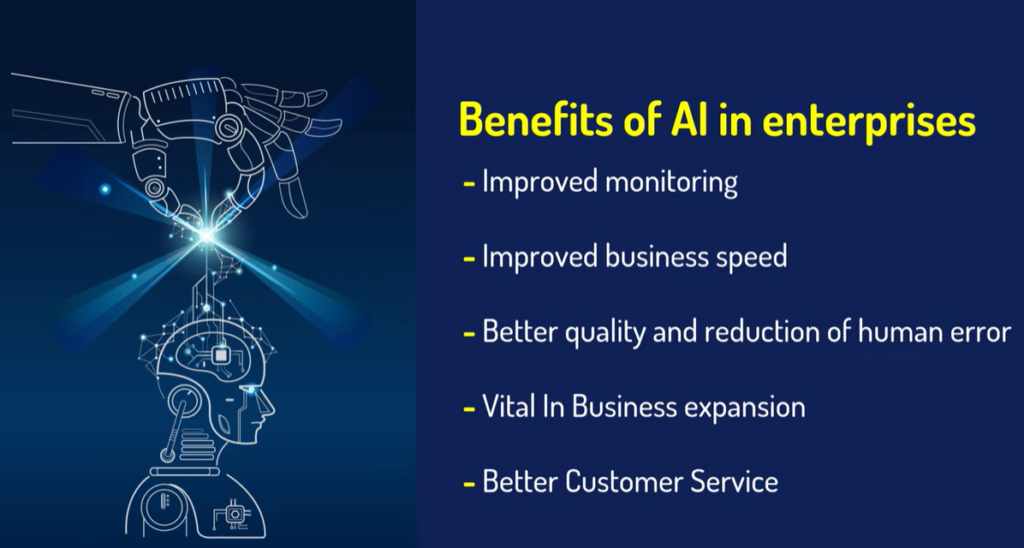
The application fields of AI are also extensive, including autonomous driving, robots, voice recognition, image recognition, smart customer service, smart home, medical diagnosis, etc.
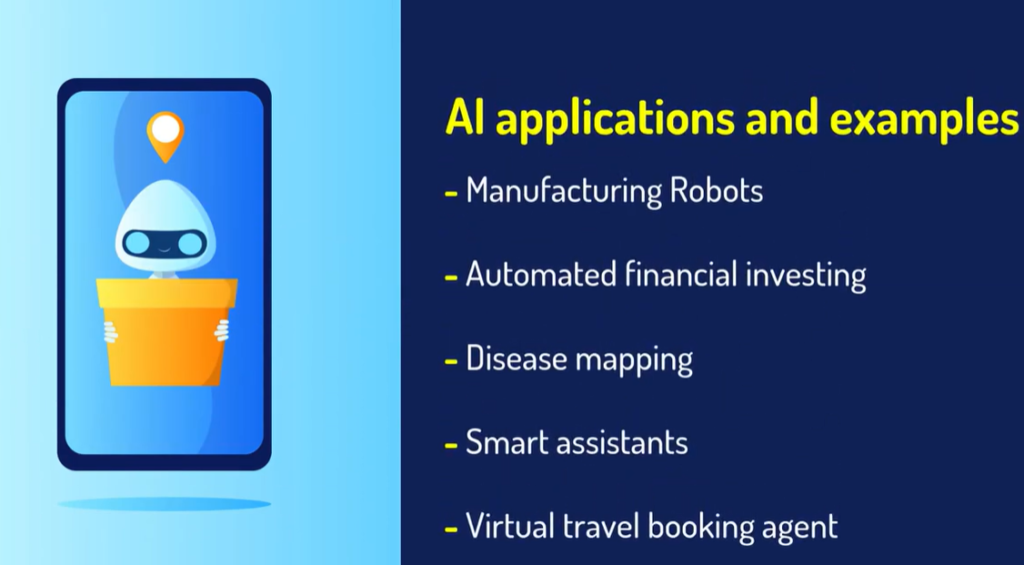
In the field of autonomous driving, AI technology can realize autonomous navigation and intelligent obstacle avoidance of vehicles.
In the field of robotics, AI technology can enable robots to have more flexible and intelligent operation capabilities.
In the field of voice recognition and image recognition, AI technology can achieve high-precision voice and image recognition.
In the field of smart customer service, AI technology can provide a more convenient and efficient customer service experience.
In the field of medical diagnosis, AI technology can assist doctors in disease diagnosis and treatment plan formulation.
Mutual Relationship and Integration
Although the Internet of Things and AI differ in definition, core functions, characteristics and application fields, they also have a close connection and mutually reinforcing relationship.
The Internet of Things provides AI with a rich source of data and application scenarios, while AI provides IoT with intelligent processing and analysis capabilities. The AIoT (Artificial Intelligence of Things) technology formed by the combination of the two is promoting the further development and application of intelligent technology.
Through AIoT technology, we can achieve a comprehensive upgrade from smart home to smart city, from smart manufacturing to smart medical care, greatly improving people’s quality of life and work efficiency.
Summary
In summary, the Internet of Things and artificial intelligence are two different but interrelated technologies.
They have significant differences in definition, core functions, characteristics and application fields, but at the same time they are closely connected and mutually reinforcing.
With the continuous development and innovation of technology, the integration of the Internet of Things and artificial intelligence will bring us a more intelligent, convenient and efficient life experience.
FAQs
The main challenges facing the development of China’s Internet of Things include:
Security issues: With the popularity of IoT devices, the threat of network attacks is increasing. Hackers may attack IoT devices, steal user privacy or control device operations, posing a serious threat to users’ property safety and personal privacy.
Standardization and interoperability issues: The Internet of Things involves many devices and systems. These devices may come from different manufacturers and use different communication protocols and data formats, resulting in poor interoperability between devices and a lack of unified standards and protocols.
Privacy protection issues: IoT devices collect a large amount of user data. How to protect this data from being abused has become an urgent problem to be solved. Users are worried that their personal information will be used for commercial promotion or other improper purposes.
Energy consumption and environmental issues: The increase in IoT devices has led to an increase in energy consumption, which has put pressure on energy resources and the environment. At the same time, electronic waste in the IoT has also increased the environmental burden.
Data management and analysis challenges: The IoT generates a large amount of data. How to efficiently manage and analyze this data, extract valuable information, and ensure data quality and user privacy is another major challenge.
The future trends of China’s IoT development include:
Technology integration and innovation: The IoT will be deeply integrated with 5G, cloud computing, big data, artificial intelligence and other technologies to promote technological innovation and application expansion.
Accelerated standardization process: As the IoT industry matures, the standardization process will be accelerated to promote interoperability between devices and coordinated development of the industry.
Security improvement: Strengthen the security protection of IoT devices and networks, improve data protection capabilities, and ensure user privacy and device security.
Application scenario expansion: The Internet of Things will be widely used in smart cities, smart homes, industrial manufacturing, agriculture and other fields, promoting industrial transformation and upgrading and social development.
The main problems facing the development of artificial intelligence in China include:
Data privacy and security issues: Artificial intelligence systems require a large amount of data for training and optimization, but the collection, storage and use of data may involve privacy leakage and security risks.
Algorithm discrimination issues: The decision-making process of artificial intelligence algorithms may be biased and discriminatory, affecting the fairness and impartiality of the results.
Ethical and legal issues: The rapid development of artificial intelligence technology has triggered a series of ethical and legal issues, such as the rights and responsibilities of artificial intelligence, moral decision-making, etc.
Technical reliability and stability issues: Although artificial intelligence performs well in some areas, its reliability and stability still need to be improved when facing complex and uncertain situations.
Computing power and cost issues: Training large artificial intelligence models requires huge computing resources and costs, which limits its application in some resource-constrained environments.
The future direction of China’s artificial intelligence development includes:
Strengthen basic research: Increase investment in basic theoretical research on artificial intelligence, enhance original innovation capabilities, and promote technological breakthroughs.
Promote industrial applications: Promote the deep integration and application of artificial intelligence technology in various industries to form new economic growth points.
Improve laws and regulations: Establish and improve the legal and regulatory system related to artificial intelligence, protect user privacy and data security, and regulate technological development.
Improve ethical literacy: Strengthen artificial intelligence ethics education and research, and guide technicians and the public to correctly understand and respond to ethical issues brought about by artificial intelligence.
Promote international cooperation: Strengthen exchanges and cooperation with the international community to jointly respond to global challenges and problems in the development of artificial intelligence.
About IOT Cloud Platform
We are a technical team focusing on Internet of Things technology, with core Internet of Things technology research and development capabilities, to solve all cloud-based Internet of Things technology services.
At the same time, the Internet of Things Cloud Platform also provides Internet of Things technology product marketing services, and provides content marketing and brand promotion services for global Internet of Things companies, so that more people around the world can understand Internet of Things technology products.
